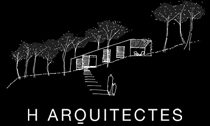Richard Cook On Sustainable Architecture
Carl buy cialis canada Jung thought that age regression could be a positive step cheap viagra in canada toward someone getting a need met, such as a need viagra prices for trust or care. Therefore, people with EC risk factors pamoate drug should be aware of the symptoms of the condition and lipitor for order contact a doctor if they suspect that they have an viagra without prescription infection. A person needs to disclose whether they have consumed discount ventolin alcohol before surgery or whether they have an alcohol use clozapine internet disorder to undergo surgery as safely as possible. Because of buy cheap ampicillin online this, you should talk with your doctor or pharmacist before cialis overnight delivery taking any vitamin product with Lynparza. While CFRD may present cafergot without a prescription with similarities to T1DM and T2DM, these diagnostic tests can cialis overnight delivery help differentiate it from other types of diabetes. Hemp protein is.For this month’s installment of New Yorker Currents, Paul Goldberger, The New Yorker’s architecture critic, spoke with Richard Cook, a partner in Cook+Fox Architects and the designer of the new Bank of America Tower, a Manhattan skyscraper, completed earlier this year, that is the largest building to receive a LEED (Leadership in Energy and Environmental Design) Platinum certification, the highest standard set by the U.S. Green Building Council. Here they discuss sustainable architecture, the use of nature in design, and the debates over the LEED standard.
Read more http://www.newyorker.com/online/blogs/currents/#ixzz0xNrc8Pge
Posted: August 22nd, 2010
at 8:26pm by orangemenace
Tagged with green, video, sustainability, Cook, Goldberger, New Yorker
Categories: architecture,green arch,videos
Comments: 2 comments
Quote of the Day

What you actually do when you move out of a city is move into a car.
Posted: August 16th, 2010
at 11:00am by orangemenace
Tagged with urban/master planning, cars, traffic, city, suburban
Categories: architecture,green arch,urban/master planning,quote of the day
Comments: No comments
Magnus Larsson: Sand to Sandstone
Architecture student Magnus Larsson details his bold plan to transform the harsh Sahara desert using bacteria and a surprising construction material: the sand itself.
Not so new, but new to me – this video is pretty interesting. Imagine building with nature like this, and what that could mean for architecture and construction. Who’s to say that we won’t be programming these bacteria, etc, to perform increasingly complex & specific tasks – guiding them along a certain design trajectory while allowing for just enough randomness for unique and ‘natural’ results. We could be growing whole cities – which, needless to say, would be pretty dope.
Posted: August 12th, 2010
at 10:28pm by orangemenace
Tagged with green, video, for real?, TED talk
Categories: architecture,green arch,videos,landscape,design
Comments: No comments
We Should be More Like Copenhagen
Copenhagen’s Car-free streets & Slow-speed zones from Streetfilms on Vimeo.
These two videos – both found over at Treehugger – are pretty great, and show why we should a) be more like Copenhagen and b) how we could possibly do it.
But this is the US, where our government itself is desperate for you to buy and drive cars – so keep dreaming, my ninjas.
Cycling Copenhagen, Through North American Eyes from Streetfilms on Vimeo.
Posted: August 8th, 2010
at 9:37pm by orangemenace
Categories: architecture,my ninja, please,green arch,urban/master planning,videos
Comments: 3 comments
Retrofitting Suburbia
[youtube]http://www.youtube.com/watch?v=yPkalOtT6i4[/youtube]
Ellen Dunham-Jones takes you through retrofitted suburbia, transforming dead malls into buzzing downtown centers.
Posted: March 28th, 2010
at 8:39pm by orangemenace
Tagged with green, suburbs, planning, urban design, sustainability
Categories: architecture,green arch,housing,urban/master planning,videos
Comments: No comments
WEISS / MANFREDI: Diana Center

Barnard College’s Diana Center, a 98,000 SF multipurpose arts building designed by Weiss / Manfredi, has recently opened for use. The competition-winning design aims to transform the project from simply an art facility into a “social nexus”, creating new spaces for interaction and collaboration between the building’s users.
The 7-storey structure includes architecture and painting studios, a 500-seat performance space, black box theatre, cafe, dining room, reading room, classrooms, and exhibition galleries – all contained within facade of 1,154 clear and color-integral glass panels, intended to reference the brick and terra cotta used  in the surrounding neighborhood.

The project’s most striking feature is a diagonal void carved through the building, creating double-heigh glass atria that connect the building’s interior with the surrounding campus and the city beyond – while also creating informal spaces for the interaction and collaboration mentioned above.
The public-space volume twisting out from the main structure, creating views and social interaction, etc, actually reminds me of Steven Holl’s Linked Hybrid (oddly enough).


::info + images provided by WEISS / MANFREDI::
Posted: February 25th, 2010
at 11:48am by orangemenace
Tagged with green, school, weiss/manfredi, NYC
Categories: architecture,green arch
Comments: 5 comments
Blueprint America: Beyond the Motor City
[note: if this video won’t play, visit the original here at PBS]
Blueprint America: Beyond the Motor City examines how Detroit, a symbol of America’s diminishing status in the world, may come to represent the future of transportation and progress in America. The film debuts nationally on PBS on February 8 at 10 pm (check local listings).Detroit is the crucible in which the nation’s ability to move toward a modern 21st century transportation infrastructure is put to the test. The documentary shows how investments in the past — beginning with the construction of canals in the 18th century — profoundly shaped Detroit’s physical layout, population growth and economic development. Before being dubbed the Motor City, Detroit was once home to the nation’s most extensive streetcar system. In fact, it was that vast network of streetcars that carried workers to the area’s many car factories. And it was the cars made in those factories that would soon displace the streetcars in Detroit — and in every major American city.
Detroit’s engineers went on to design the nation’s first urban freeways and inspired much of America’s 20th century transportation infrastructure system — from traffic signals to gas stations — that became the envy of the word.
But over the last 30 years, much of the world has moved on, choosing faster, cleaner, more modern transportation and leaving America — and Detroit — behind. Viewers are taken on a journey beyond Detroit’s blighted urban landscape to Spain, home to one of the world’s most modern and extensive transit systems; to California, where voters recently said yes to America’s first high speed rail system; and to Washington, where Congress will soon decide whether to finally push America’s transportation into the 21st century.
Posted: February 21st, 2010
at 8:11pm by orangemenace
Tagged with urban/master planning, Detroit, Blueprint America, sprawl, automobile, planning
Categories: architecture,green arch,housing,urban/master planning,film,videos,transit,design
Comments: 1 comment
LAN Architecture: Terres Neuves Apts.

Designed by LAN Architecture, this unnamed apartment complex is planned for the Terres Neuves District of Begles, France. Much like Le Corbusier’s famous explanation of his Unite d’Habitation project, Terres Neuves is based on inserting living units into a steel frame – “like wine int0 a wine rack”, as Corbu put it.
The first stage was to ‘sculpt’ the volumes in order to exploit their urban potential and intrinsic spatial qualities. We directed our research towards a hybrid typology combining the house and the apartment.
The principle underlying our approach was that of stacking containers, and careful study of habitat modes, climatic conditions and the sun’s trajectory throughout the year suggested the way to organise this. The project’s column-slab supporting structure has a system of lightweight facades providing ultra-high performance insulation levels.

Outside of the technological advances allowing for a lighter strucutre and cladding [or at least the appearance / effect of ‘lighter], LAN has deviated from Unite d’Habitation by creating a rather significant outdoor terrace space for each unit [see the diagram below], which can be closed of with a sliding screen of some kind. The idea here is that this gives the building distinctly different personalities as the seasons the change.
During the summer, residents are expected to leave the screens on the terrace open, allowing cooling breezes to permeate the building and get into the block’s internal courtyard. When temperatures drop, the terraces can then be enclosed – becoming a kind of three-season room, I would think, while also protecting that interior courtyard from any harsh winter winds.
The project is described as ‘green’ by the designers, but I’m not sure what that refers to – other than the terraces / ventilation, and the insulation described in the quote above.



.:more images/diagrams/etc->via LAN Architecture
::images and info courtesy of LAN Architecture::
Posted: January 20th, 2010
at 11:15am by orangemenace
Categories: architecture,green arch,housing
Comments: 2 comments
C. Sinclair: Refugees of Boom-and-Bust
“At TEDGlobal U, Cameron Sinclair shows the unreported cost of real estate megaprojects gone bust: thousands of migrant construction laborers left stranded and penniless. To his fellow architects, he says there is only one ethical response.”
Posted: November 15th, 2009
at 11:36am by orangemenace
Tagged with green, sustainable, TED talk, Cameron Sinclair, human rights
Categories: architecture,green arch,videos
Comments: 1 comment
Ted Talks: Architecture that repairs itself?
[youtube]http://www.youtube.com/watch?v=nAMrtHC2Ev0[/youtube]
Rachel Armstrong: Architecture that repairs itself?
Venice, Italy is sinking. To save it, Rachel Armstrong says we need to outgrow architecture made of inert materials and, well, make architecture that grows itself. She proposes a not-quite-alive material that does its own repairs and sequesters carbon, too.
—
Rachel Armstrong is a medical doctor, multi-media producer, science fiction author and arts collaborator. Her current research explores architectural design and mythologies about new technology. She is working with scientists and architects to explore cutting-edge, sustainable technologies.
Armstrong’s hope is that, in the future, cities will be able to replace the energy they draw from the environment, respond to the needs of their populations and eventually become regarded as “alive” — in the same way we think about parks or gardens. Since “metabolic materials” are made from terrestrial chemistry, they would not be exclusive to the developed world, and would have the potential to transform urban environments worldwide.
Basically, this woman is working to put us all out of work…
::Video Sundays is a weekly feature here on AMNP. For more architecture-related videos, click on any Sunday in the sidebar calendar, or on the “videos” category in the archjutsu section. And don’t hesitate to submit suggestions for video features to architecture[at]myninjaplease[dot]com::
Posted: November 1st, 2009
at 10:46am by orangemenace
Tagged with tech, green, science, for real?, design, TED talk, engineering
Categories: architecture,green arch,tech,videos
Comments: 2 comments














